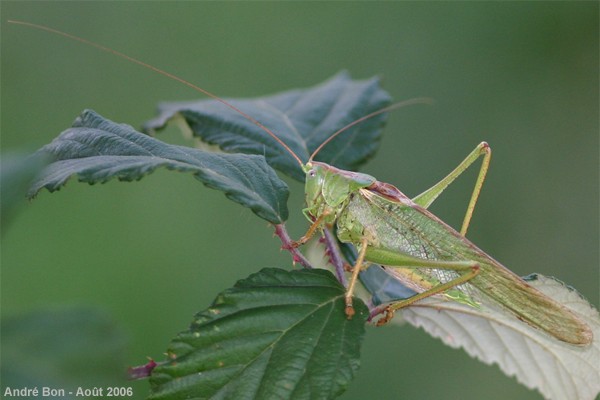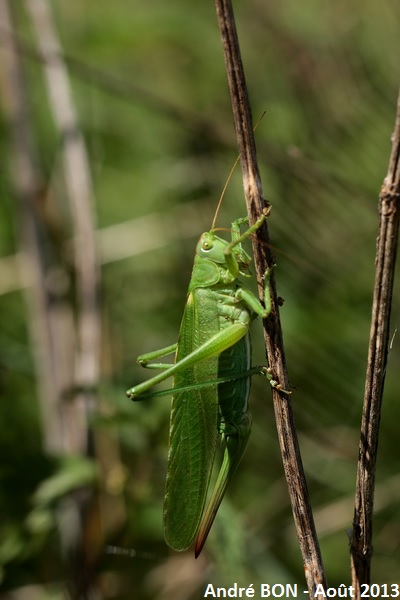


| Great Green Bush-cricket (Tettigonia viridissima (Linnaeus, 1758)) |



|
|
Scientific name: Tettigonia viridissima (Linnaeus, 1758) Common name: Great Green Bush-cricket French name: Grande sauterelle verte Order: Orthoptera Family: Tettigoniidae Wingspan : Body size: 40 to 50 mm. The wings exceed body length, the antennae are very long. Biotope: Meadows and many other habitats with bushes, especially with dry conditions. Geographic area: Europe, North Africa, Asia. Observation period : July-August. |
Tettigoniids can be distinguished from grasshoppers by the length of their antennae which are very long. Females have a long down-curved ovipositor to lay the eggs. The tip of the ovipositor reaches the tip of the elytra. Great Green Bush-cricket are mainly carnivorous and feed on insects, larvae and caterpillars. As implied by its name, the general colour is green. There is a brownish dorsal stripe. The inner margin of the elytra is brown too. There is a possible confusion with Tettigonia cantans, but this last one has shorter wings. Males stridulate by rubbing their elytra, mainly during the night. Females lay the eggs into the ground in late summer. The Great Green Bush-cricket overwinters as an egg. Nymphs emerge since mid May and are adults in July. |
| [To know more about the Great Green Bush-cricket] [Next picture] [Top] |

|
Great Green Bush-crickets are mainly arboreal insects. Don't look for them on the ground. Caution, they can bite! |
| [To know more about the Great Green Bush-cricket] [Next picture] [Previous picture] [Top] |

|
Again, the lack of ovipositor indicates one male. I still have to shoot a picture of a female. |
| [To know more about the Great Green Bush-cricket] [Previous picture] [Top] |

|
Here is one female with its sabre-shaped ovipositor reaching the tip of the elytra. |